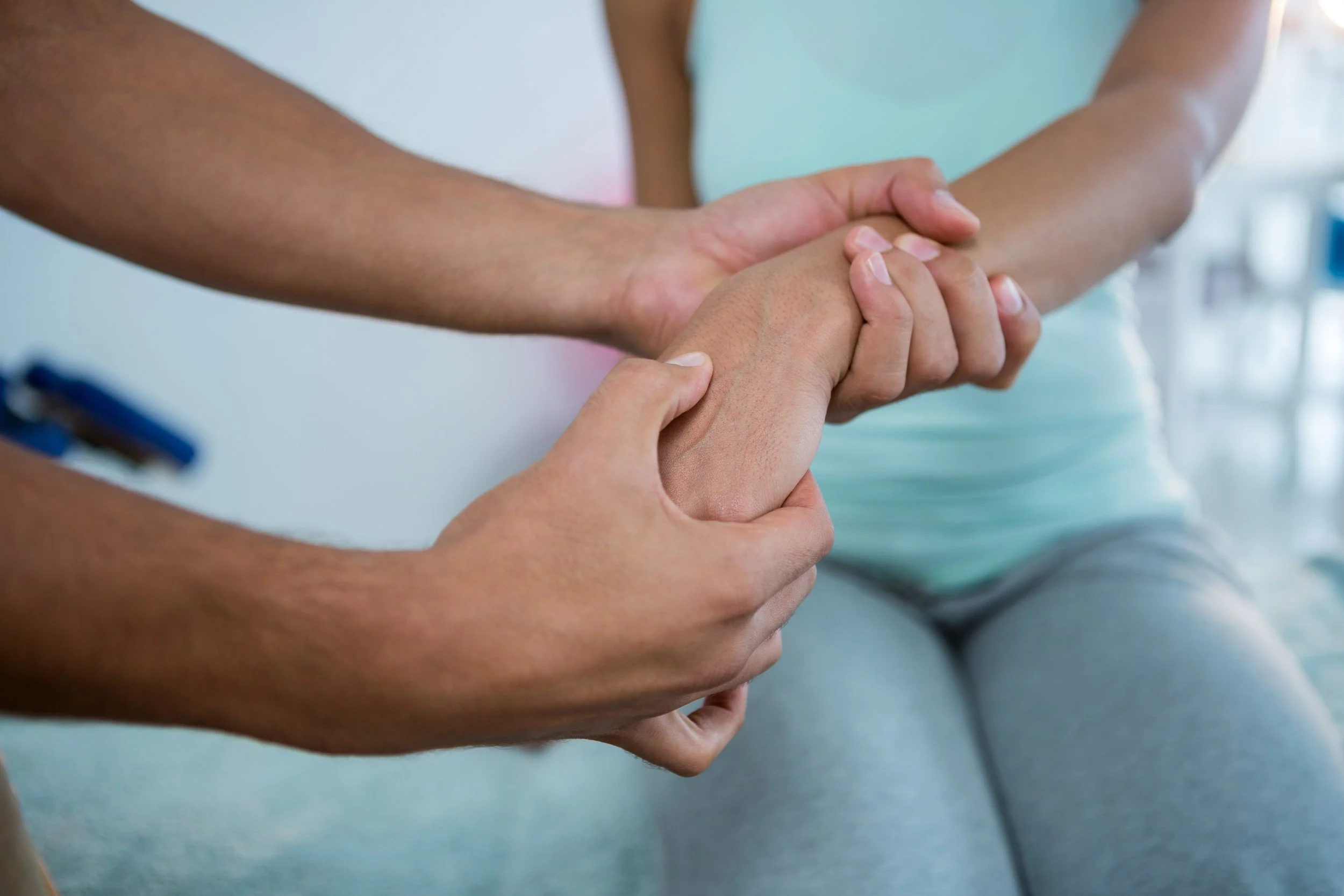First Time in a Flotation Tank
/I’d been wanting to try this for years. So for my birthday this year, my husband bought me three one-hour float sessions. This was my first session.
I mentioned it on Facebook before I went to float, and since then seemingly everyone has asked about it. Several FB friends private messaged me to see how it went. Some friends called. One gal from my church even stopped me in Target this weekend and asked about it. Plus, this morning I got a text from my mother-in-law saying, “I need to know how the sensory tank experience was.”
So here’s the rundown, start to finish.
I went to bed early the night before, and woke before anyone else in my house. They advised don’t eat a lot or drink caffeine before you float. (It’s called floating – I’m hip with the lingo now.) So I ate a protein bar and drank half a glass of water. Next I showered – you’re suppose to enter the tank clean and free of lotions, hair products, etc. I packed the kids’ lunches for school, and then slipped off in the early morning mist for my 7:30 AM appointment.
When I arrived, the owner of the establishment gave me a few pointers on what to expect and how to have a successful float. I’d already read a lot on this myself. (That won’t surprise any of you that know me well.) The idea is to not have information coming into your brain from your senses – sight, touch, smell, you get the idea. It’s also not to put any strain on the body – no need to move, support yourself, resist gravity.
The goal of all this depends on the floater.
- For some, it’s just to deeply relax the muscles. This is said to be great for rehabbing injuries, recovering from a strenuous workout, or for conditions such as fibromyalgia.
- For some, it’s to enter a deep state of relaxation. To escape the outside world, de-stress, lower the blood pressure, and feel the happy result which is a large amount of dopamine released in the brain.
- For some, it’s to gain rest. It’s been scientifically proven that an hour in the tank is equivalent to four hours of sleep. Those working shift work, experiencing jet lag, or wrestling with insomnia appreciate this.
- And some are after the reported enhanced focus and creativity that comes with the theta brain waves that result from the stillness and lack of sensory input. Theta waves they’re called – the ones we experience when we’re in-between asleep and awake.
Others, like me, are just intrigued by it all, and like trying new things.
She showed me around the tank area, then left me alone in the dimly lit room. I put in the provided wax ear plugs – this reduces noise and keeps the salt water out of your ear canals. I undressed. You can wear a swim suit but the idea is not to feel anything against your skin so they recommend you enter the tank naked.
Yep.
I stepped inside the warm tank. The water was about 10 inches deep. I knelt down, and closed the door to the tank – I’m now in total darkness. From my kneeling position I put my hands down on the bottom of the tank and walk my them backwards, kind of like a crab walk – and then stretch myself out as if lying down on a couch.
At that point, rather than sinking to the bottom of the tank, I remain suspended at water level. Weightless in warm water.
There’s about 1,000 pounds of Epsom salt in that water holding me up. Truly, one thousand pounds. The water itself has sort of a slick feeling to it, due to all the dissolved salt I assume. And it’s heated to the temperature of my body. Because I am weightless in this liquidly saline solution, I can float perfectly still. And because the water and my body are the same temp, I get the subtle sensation after a while that my body has disappeared.
But that’s not the first sensation I get. The very first sensation I experience immediately after laying down is a spinning sensation. It felt like I had turned 180 degrees within seconds of laying down on the water. But I knew this wasn’t really possible. The tank is rectagular. And not wide enough for me to fit fully sideways in it.
The spinning sensation was easy to stop by moving close enough to one of the sides of the tank to touch it with my hand or toes. Touching the tank immediately “grounds” you and the sensation stops. Crazy how that works. After a short while, the rotating feeling ended and I no longer needed to touch the tank.
For the first maybe fifteen minutes – you lose track of time in there – soothing music played in the tank along with the sound of ocean waves. It helped calm me as I got used to this very new experience. My senses were on high alert as I took in my new surroundings – or lack there of. And I wondered if I’d be able to settle into the “theata state” or not.
Being a journalist by training and a writer by trade, one part of me was experiencing this – determined to relax deeply – while the other part of me was documenting it and analyzing it.
I discovered the tank is a good place to pray – no distractions. I prayed frequently as the spa-like music played. Meanwhile, as long as I remained still and didn’t create any movement or waves, I couldn’t really feel where I ended or where the water began.
When the music stopped, I was in silence. Dark silence. Stillness. Except that I could hear myself breathing. You can’t help but hear yourself breathing. And here’s another discovery I made about the tank. It’s not only a good place to hear yourself think, it’s the only place I can hear myself blink!
I opened my eyes when the music stopped. Blackness. I blinked. Inky blackness. I blinked again – and I could hear myself blinking. Did you know it makes a noise when you blink? It sounded a lot like the noise my iPhone makes when I snap a photo.
I blinked for a while, fascinated with the sound.
Several more minutes passed – maybe 10? – and I believe I briefly started to hear my own heart beat. Or maybe it was blood flowing and pulsing through my neck in that spot where nurses take pulses. I’m not certain – I only heard it briefly. I remembering thinking this must be what it’s like to be in a womb. Then my breathing slowed down and grew quieter. I no longer heard the heart beat sound.
I entered the theta state.
I never fell asleep – I just remained relaxed and still and let my thoughts go where ever they wandered. I can’t tell you where they went because I don’t really recall, not totally. (It’s like trying to recall what you were thinking in the two minutes right before you fell asleep last night.)
I very much wanted to see what this state was like, and what my mind would think/do. At the same time, I was ever so slightly worried about it. During college, my roommate Amy and I watched a (fictional) movie called Altered States about a Harvard scientist experimenting with a sensory deprivation tank. During long floats, with the aid of psychotropic drugs, he would regress into a savage being. He’d wake up the next day and find himself in a local zoo, covered in blood, with the carcass of a antelope or something beside him. So you understand my slight apprehension over what I would think about in that tank!
I didn’t have any hallucinations or “out-of-body” experiences. I didn’t have any grand epiphanies or eureka moments either. I just floated. Suspended somewhere between sleep and space. In calm and salt.
I do remember noting that I felt very nonjudgmental while floating there.
I knew that the owner would knock three times on the tank door when my hour was up. I was to knock three times in response, and then she’d leave the room again. If I’d fallen asleep inside, she’d keep knocking until I awoke and knocked back.
I suddenly came “up” out of thea state into a relaxed but more alert state. I wondered what time it was, how much time had passed, and how much time I had left? Very shortly after that, I heard three knocks. My time was up.
I survived my float with out freaking out. And without turning savage and eating a gazelle. (It’s safe, Amy.)
Here’s some questions I’ve been asked about it:
1) Did your hands and feet get wrinkly? No. Not at all. That only happens when salt is drawn out of your body into the surrounding water. Salt enters your body when floating – and that is a healthy thing.
2) Did your skin or hair turn dry from the salt? No, not at all. In fact, they may have gotten a bit softer.
3) Can you drown in there? No. It’s only 10 inch deep water. And at any time you can sit up or bend your knee and your foot will touch the bottom.
4) Did it smell like salt water, like the ocean? No. And this may have been specific to the brand of tank I was in, but there was a slight rubbery smell from the rubber that rimmed the door to the tank. My daughter asked if I got used to the rubber smell, and therefore it “went away”? I told her no, I smelled it the entire time – which didn’t help the sensory deprivation goal. My husband then reminded my daughter that I have a very accute sense of smell – he thinks others wouldn’t notice it like I did. He’s probably right.
5) Did you get claustrophobic in there? I worried a little about that in advance. But I was determined not to. I decided to do the whole “mind over matter” thing and resist any feelings of claustrophobia. A couple times I reminded myself: I can sit up and open that door and get out of this any time I want to. But I did not spend the hour fighting against the urge to scream or claw my way out of the tank.
I left there in a good mood. Not a hyper-excited good mood, more a contented and relaxed good mood.
And here’s perhaps the best part.
I came home after my float, got into a hot shower – I opted to rinse off the salt at home rather than there – threw on some yoga pants and headed for my home office. I sat down and worked for 6 1/2 hours straight.
Super focused. Super calm. Super productive.
No coffee needed.
Relaxed and yet energized, I calmly and contentedly blazed through my to-do list. The same to-do list I’d been mostly ignoring for the last couple few several days because I never felt like buckling down and making myself tackle certain pieces of it. Now I selected a task, started it, saw it thru completion, and then moved on to the next task. All.The.Way.Through.My.List.
I didn’t get bored, or antsy, or sucked into an internet rabbit hole. You know the kind where you find yourself 40 minutes later watching YouTube videos of laughing babies and you have no idea how you got there? Yeah, none of that.
So my verdict?
It’s an interesting experience. Slightly weird, yes – at least at first. Yet also relaxing once you make peace with the idea. It’s probably not for everyone. You probably could get many of the same benefits with a good massage and/or a hot tub. But this was definitely interesting. And I tend to like interesting so long as it’s not totally whack.
(I understand what is whack to one seems reasonable to another. To each his own. See, the tank made me less judgmental.)
Would I do it again? Yes. I think I need to in order to experience the full effect of floating because you spend a lot of time the first float trying to decide if you are going to like this or not, and wondering what will happen next. I think my second time around I’ll be able to relax into it more from the get-go.
Thankfully, Rick bought me three of these floats so I’ll let you know how float # 2 goes. And I’ll decide then if I’m going to use the third float, or trade it in towards a session in the infrared sauna they have – which I’ve also been wanting to try.
So, do you think would you try this flotation tank thing if you had the chance?
This article originally appeared on http://www.rachelolsen.com/time-flotation-tank/ was written by Rachel Olsen











![Self-regulation “control [of oneself] by oneself"](https://images.squarespace-cdn.com/content/v1/55563e14e4b01769086817cb/1542845645966-PO2HGKF5JLUBM45UIWQ3/wee-lee-790761-unsplash.jpg)



















